
DISCUSS:
This probably isn’t the first time you’ve heard the word "acid." What does this word make you think of?
























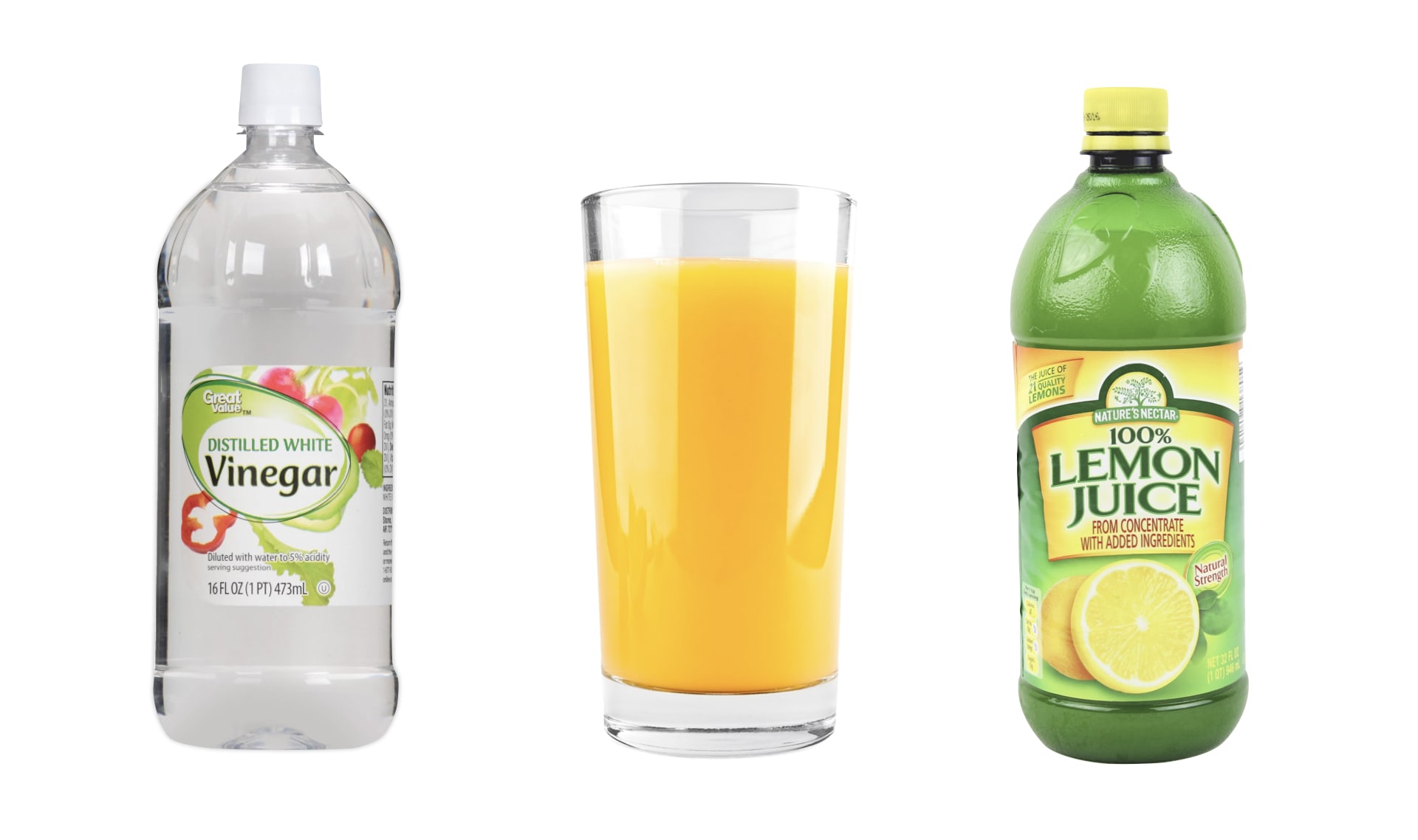




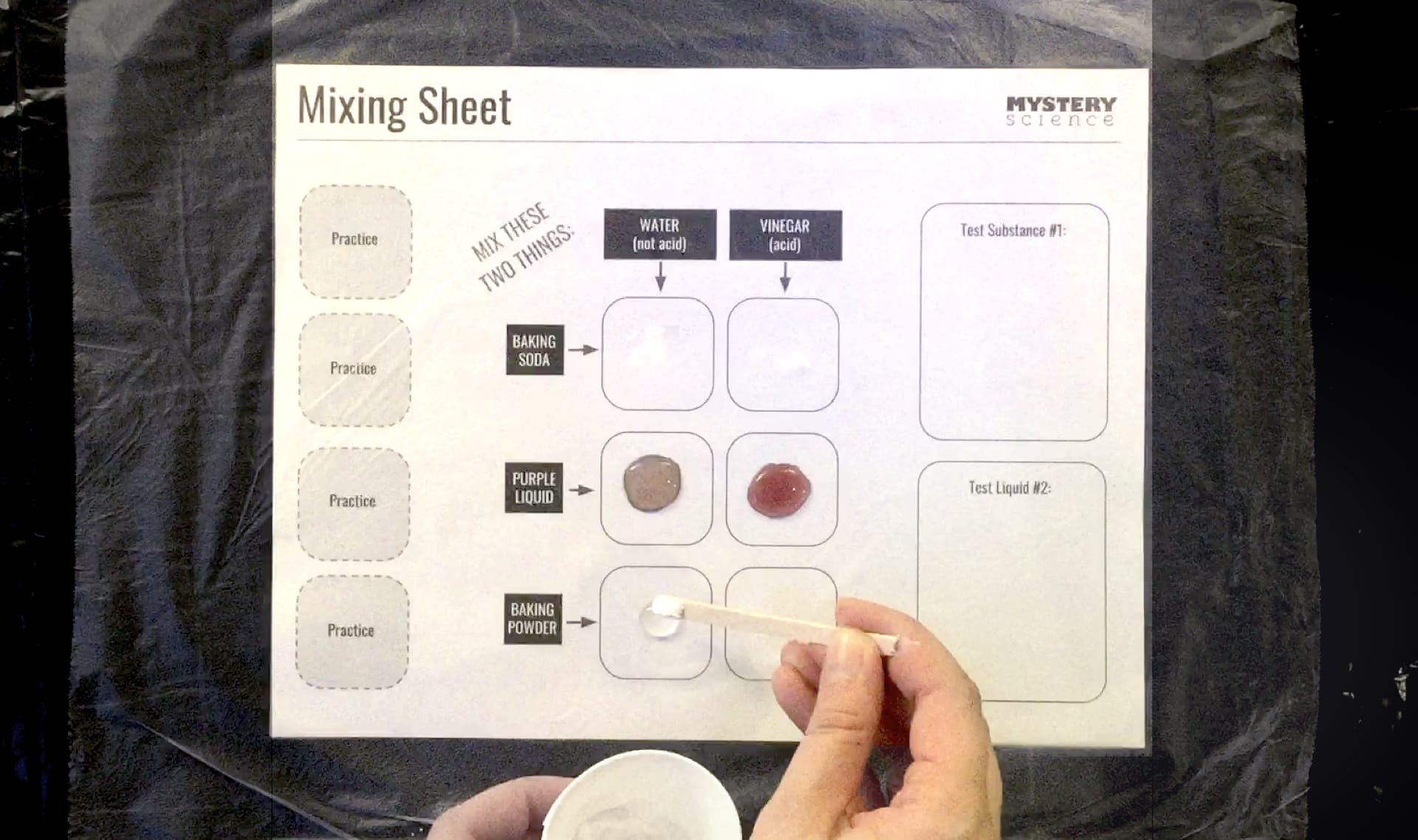
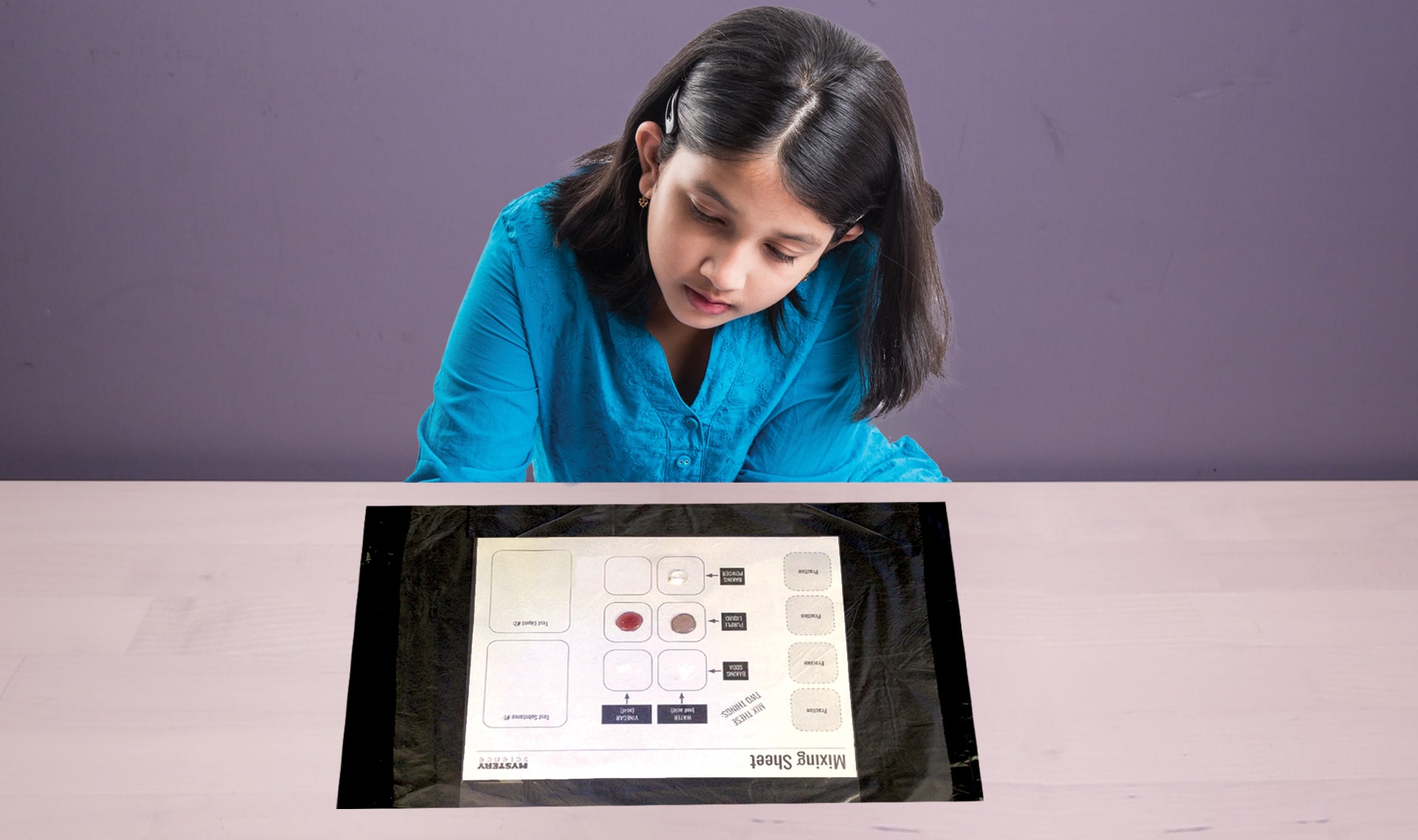


| Acid Test Results worksheet | 30 copies |
| Acid Test Results Answer Key teacher-only resource | 1 copy |
| Mixing Sheet printout | Print 15 copies |
| Testing & Acid Reaction Supply Mats printout | Print 8 copies |
|
Clean-up Supplies (Eg. Paper Towels)
|
1 roll |
|
Purple Cabbage (Chopped)
You can use 7 ounces dried black beans instead, but purple cabbage works better.
|
Details
2 cups
|
|
Table Covering (eg. Trash Bags)
|
16 bags |
|
1 Acid
You can use lemonade, ketchup, mustard, pickle juice, or yogurt.
|
Details
8 tablespoons
|
|
Baking Powder
|
8 tablespoons |
|
Baking Soda
|
8 tablespoons |
|
Coffee Stirrers
Craft sticks or spoons will also work.
|
Details
32 sticks
|
|
Dixie Cups (3 oz)
|
56 cups |
|
Measuring Cup
|
1 cup |
|
Measuring Spoons
|
1 set |
|
Plastic Bin
Must hold at least 4 cups of water. Used to make your indicator liquid.
You can also use a gallon-sized Ziploc bag.
|
Details
1 bin
|
|
Plastic Straws (Not Bendable)
|
20 straws |
|
Salt
|
1 cup |
|
Sheet Protector
You can also use taped-down waxed paper or Press n' Seal.
|
Details
15
|
|
Toothpicks
|
30 toothpicks |
|
White Vinegar
|
1 cup |
You will need access to water for this activity.
We suggest students work in pairs and two pairs of students share supplies at the same table group. Homeschool students can work on their own.
If you’re using purple cabbage, put 2 cups of chopped cabbage in 1½ cups of water. Leave it for at least an hour, stirring occasionally. The cabbage will turn the water purple. Drain the chopped cabbage and reserve the purplish-pink liquid. If you’re using black beans, put 1 cup of beans into 2 cups of water and leave them for at least an hour. The beans will soak up some water and turn the rest purplish brown. Drain the beans and reserve the purplish-brown liquid.
Cut each straw in half to make two short straws. Students will use these to transfer drops of liquid. (Full-length straws are likely to tip over cups.)
Gather all of your Dixie cups and separate them into seven equal piles. You will fill the cups in each of these piles with a different liquid or powder.
We recommend you set up four supply stations.
Station A: Acid Reaction Supplies
From this station, each group of students will bring the following back to their desk:

Station B: Testing Supplies
From this station, each group of students will bring the following back to their desk:
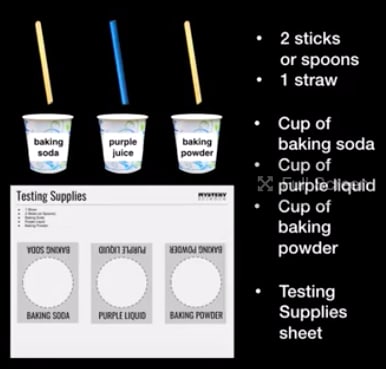
Station C: Worksheets & Clean-up Supplies
From this station, each pair of students will bring the following back to their desk:
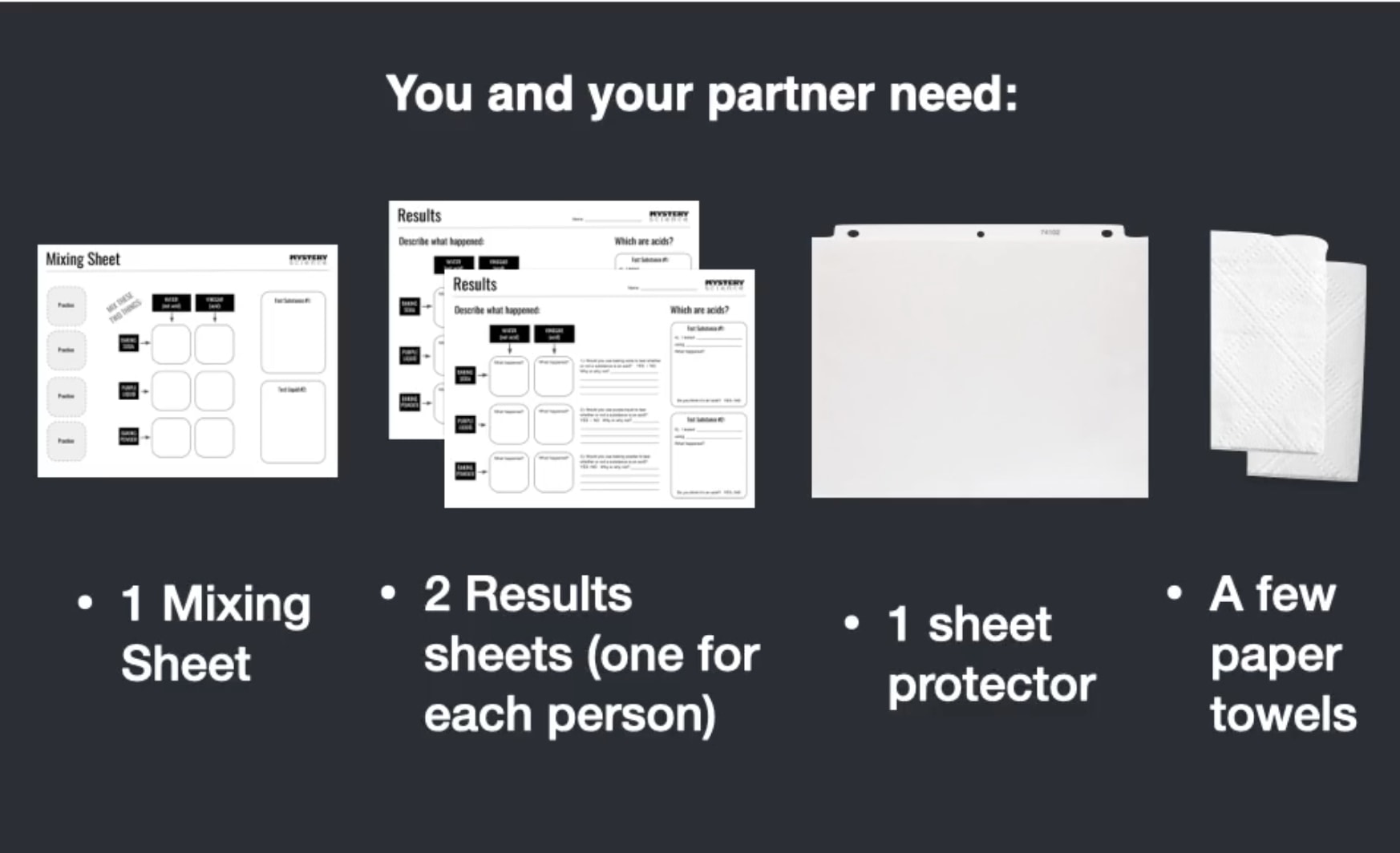
Station D: Unknowns
From this station, each pair of students will bring the following back to their desk:
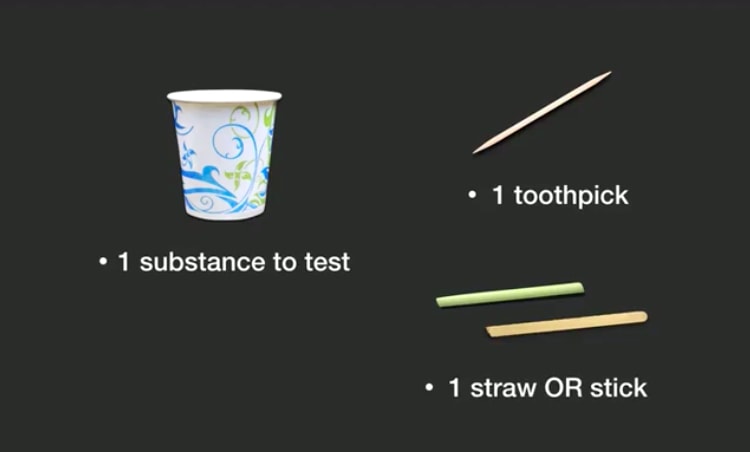
The purple liquid that you prepare from the cabbage (or black beans) is called an indicator. There’s a pigment in purple cabbage and black beans that changes color when it reacts with an acid or base. You and your students should notice that the color of the liquid changes to a reddish/pink when you add it to any of the acids (e.g. vinegar). You can then use this information to test unknown liquids. If the liquid turns pink, then it’s an acid.
You and your students will also notice that when baking soda is mixed with vinegar, there is fizzing that indicates an acid-base reaction. But baking soda does not fizz when mixed with water, making it a good acid indicator. Baking powder will also fizz with vinegar. But you will notice that baking powder will also slightly fizz when water is added. This is because baking powder is actually a mixture of baking soda (base) and cream of tartar (acid). This is why it reacts with both water and vinegar. So baking powder is not a good indicator because it fizzes when any liquid is added.
Thanks for your feedback! If you have a question or need help, please contact us. Please consider sharing your review:
Sorry the lesson didn’t go well. We read every single review in an effort to improve our Mysteries.
Thanks for letting us know. We’ll wait to ask you for feedback until after you've actually taught it.
Thanks for the feedback! We read every single review in an effort to improve our Mysteries.
Please follow these steps:
Locked
6:10

Why is the sky blue?
Locked
4:41

Why do we call them doughnuts?
Locked
5:16

Could a turtle live outside its shell?
Your membership is expired. The archive of past Mini Lessons is not included in your limited access.
View pricing